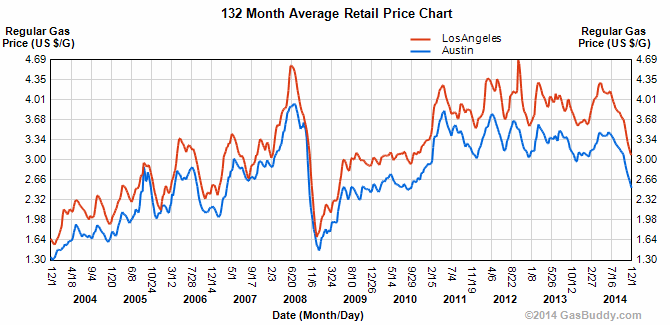The Center for Medical and Medicaid Services (CMS) new Open Payments database shows the consulting fees, research grants, travel and other reimbursements made to medical industry in 2013
There are 2,619,700 payments in the CMS data made to 356,190 physicians. The average payment made to physicians was $255.22. The median payment was $15.52.
Overall, Clinical Pharmacology and Orthopedic Surgery professions received the most grants and other payments. The table below shows the percentage of average payment by specialty as a percentage of the average overall payment to all medical specialties. The STATA code is listed below.
| Medical Specialty | % of average payment to all speciallites |
| Clinical Pharmacology | 1516% |
| Orthopaedic Surgery | 473% |
| Group: Multi-Specialty | 436% |
| Nutritionist | 328% |
| Medical Genetics | 284% |
| Surgery | 282% |
| Transplant Surgery | 268% |
| Neurological Surgery | 266% |
| Pathology | 203% |
| Pediatrics | 197% |
| Oral & Maxillofacial Surgery | 160% |
| Laboratories | 154% |
| Preventive Medicine | 150% |
| Nuclear Medicine | 135% |
| Neuromusculoskeletal Medicine | 132% |
| Phlebology | 130% |
| Radiology | 123% |
| Thoracic Surgery | 121% |
| Colon & Rectal Surgery | 121% |
| Internal Medicine | 116% |
| Anesthesiology | 116% |
| Pharmacy Technician | 115% |
| Dentist | 108% |
| Group: Single Specialty | 107% |
| Otolaryngology | 97% |
| Other Service Providers | 91% |
| Chiropractor | 86% |
| Plastic Surgery | 86% |
| Ophthalmology | 84% |
| Allergy & Immunology | 84% |
| Registered Nurse | 83% |
| Agencies | 81% |
| Technologists, Technicians & Other Technical Service Providers | 79% |
| Physician Assistant | 77% |
| Obstetrics & Gynecology | 77% |
| Dermatology | 74% |
| Podiatrist | 73% |
| Psychiatry & Neurology | 70% |
| Pain Medicine | 64% |
| Urology | 64% |
| Physical Medicine & Rehabilitation | 57% |
| General Acute Care Hospital | 57% |
| Counselor | 56% |
| General Practice | 52% |
| Dental Hygienist | 43% |
| Student, Health Care | 43% |
| Clinical Neuropsychologist | 43% |
| Assistant, Podiatric | 41% |
| Clinic/Center | 40% |
| Optometrist | 38% |
| Military Hospital | 37% |
| Long Term Care Hospital | 37% |
| Emergency Medicine | 36% |
| Personal Emergency Response Attendant | 36% |
| Respiratory, Developmental, Rehabilitative & Restorative Service Providers | 35% |
| Dietary Manager | 35% |
| Family Medicine | 33% |
| Hospitalist | 33% |
| Speech, Language & Hearing Service Providers | 32% |
| Managed Care Organizations | 31% |
| Electrodiagnostic Medicine | 31% |
| Pharmacist | 28% |
| Legal Medicine | 27% |
| Nursing & Custodial Care Facilities | 26% |
| Psychologist | 24% |
| Hospital Units (Psychiatric and Rehabilitation) | 22% |
| Licensed Practical or Vocational Nurse | 20% |
| Suppliers | 17% |
| Psychoanalyst | 17% |
| Special Hospital | 16% |
| Denturist | 15% |
| Dental Laboratory Technician | 14% |
| Social Worker | 14% |
| Dietitian, Registered | 13% |
| Residential Treatment Facilities: Mental Illness, Retardation, and/or Developmental Disabilities | 11% |
| Psychiatric Hospital | 10% |
| Eye & Vision Technician: Technologist | 10% |
| Behavioral Analyst | 9% |
| Emergency Medical Technician | 9% |
| Dental Assistant | 9% |
| Marriage & Family Therapist | 9% |
| Chronic Disease Hospital | 8% |
| Independent Medical Examiner | 7% |
| Nursing Home Administrator | 5% |
| Nurse’s Aide | 5% |
STATA Code
se “dataopenrecords-small.dta”, clear
rename recipient_state State
drop if State==”” | State==”AE” | State==”AA”| State==”AP” | State==”GU”| State==”ON” | State==”VI”| State==”PR”
keep physician_spec total number
rename p Specialty
sort S total number
drop if S==””
destring number, replace
collapse (mean) tot num , by(S)
rename tot Average_Payment_Amount
rename num Average_Number_of_Payments
outsheet S Average_P Average_N using “P:Business Dev ProjectsEmployStats9074 – OpenRecordsTablesspecialty_payments.csv”, comma nolabel replace

